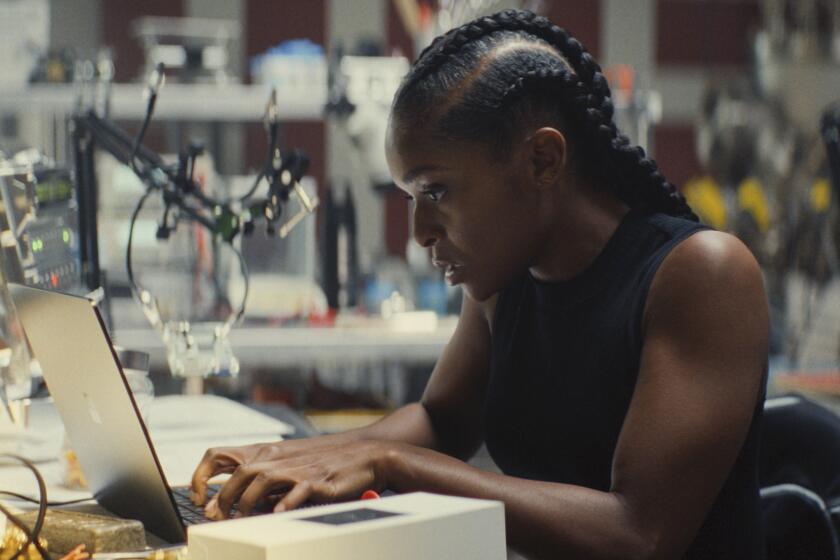DIY means Distribute It Yourself
- Share via
The do-it-yourself movement has transformed music, home improvement, political action and even comic book publishing. Now the DIY cause is starting to upend movie distribution, and is no longer a scarlet letter that filmmakers labored to hide.
Not that long ago, any movie being distributed by its director or producer was considered damaged goods: If not a single legitimate distributor wanted to release a film, it simply had to be agony to watch. But as the specialized film business has been experiencing its own tumult -- some studios shut down or downsized their art-house divisions, while others looked only for indie films that could play to the broadest audience possible -- the DIY distribution stigma quickly became immaterial.
These days, a number of new movies with recognizable stars and prestigious film festival pedigrees are being released by their makers, and while the early financial returns are easily forgotten, the trend is not as hard to dismiss.
The way the filmmakers see it, self-distribution has become a creative solution to many of the industry’s woes, where countless indie films come and go in the blink of an eye. What’s more, the strategy gives a film’s creators not only final say over how their movie is brought to audiences but also lasting ownership of its copyright.
“It’s not at all what I thought I’d be doing,” says Randy Miller, who with his wife and filmmaking partner, Jody Savin, self-distributed this summer’s wine competition drama “Bottle Shock” and will do the same with their Dec. 5 thriller “Nobel Son.” “But the system is broken. So what else are you going to do?”
Producer Ehud Bleiberg will self-distribute “Adam Resurrected” (a Holocaust drama starring Jeff Goldblum and Willem Dafoe) in December, while director Justin Dillon is releasing his human trafficking documentary “Call + Response” by himself.
“We always thought that grass-roots support was what was going to launch this film,” says Dillon, whose activist film invites moviegoers to send text messages during showings to donate money, write to legislators and download songs from the film. “So by doing it ourselves we kind of stick with the film’s story.”
Among the most intriguing DIY titles is writer-director Lance Hammer’s “Ballast,” which arrives in Los Angeles on Nov. 7.
After premiering at this year’s Sundance Film Festival, where it won the top Grand Jury Prize, Hammer’s drama about the personal struggles of three people living in the Mississippi Delta attracted a number of rave reviews and several modest distribution offers, promising Hammer no more than $50,000 up front (with a slim chance of more money later).
Hammer tentatively agreed to sell the film’s distribution rights to IFC Films, but had second thoughts when he reviewed IFC’s contract and felt that its economics -- coupled with his lack of control over how the film would be released -- didn’t fall in his favor.
It’s not just the contractual commitments that filmmakers like Hammer and Miller mind. It’s also today’s current theatrical release model, where movies that don’t prove themselves immediately at the box office are pulled from theaters.
“The problem with independent distribution is that they spend just a little bit of money at the start and then dribs and drabs if it works,” Miller says. “So they are setting themselves up for failure.”
When Hammer decided to distribute “Ballast” himself, he suddenly had to learn how to design movie posters, cut a trailer and pick which cities and theaters would be best for a film that despite great reviews has limited mainstream appeal.
“The most important thing is you have to be interested in the process, and I don’t think that most filmmakers are,” says Stephen Raphael, whose company Required Viewing is providing marketing and release guidance for “Ballast.” “You have to be as passionate about this as making your movie. Because if you’re not, there are a lot of stumbling blocks.”
And bills to pay.
Miller spent several million dollars releasing “Bottle Shock” nationally, but Hammer’s limited release plan (“Ballast” has played in New York, and moves to Chicago and Boston on Friday) will cost only several hundred thousand dollars.
“I think it’s the same skill set that’s required for production -- and I was a producer on this film as well,” Hammer says. “You have to use your intuition. You make a lot of mistakes, and you know the second time around not to make the same mistakes.” He says he will distribute his next (as yet unmade) film himself too.
While Hammer believes film festivals are critical to building audience interest -- “Ballast” has played more than 40 festivals -- he is convinced that word-of-mouth college screenings turn potential ticket buyers into freeloaders.
Neither Miller nor Hammer will end up making a profit during their theatrical releases, but both hope they will come out ahead when their films come out on DVD and through video on demand.
“The reason I chose to do this,” Hammer says, “is because I wanted to do what’s best for the project.”
--
Horn is a Times staff writer.
More to Read
The biggest entertainment stories
Get our big stories about Hollywood, film, television, music, arts, culture and more right in your inbox as soon as they publish.
You may occasionally receive promotional content from the Los Angeles Times.











